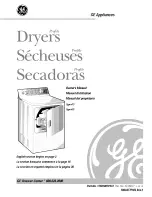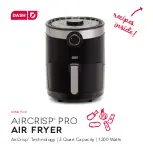
SV9401/SV9402/SV9403, SV9501/SV9502/SV9503, SV9601/SV9602 SMARTVALVE™ SYSTEM CONTROLS
5
69-1004—2
Fig. 1. Convertible Regulator for SmartValves.
3.
Make sure that the O-ring fits in the groove of the
flange. If the O-ring is not attached or missing, do
not use the flange.
4.
With the O-ring facing the ignition system control,
align the screw holes on the ignition system control
with the holes in the flange. Insert and tighten the
screws provided with the flange. See Fig. 2.
Tighten the screws to 25 inch-pounds of torque to
provide a gas-tight seal.
Fig. 2. Firmly fasten flange to valve but do not
overtighten screws.
Bushings
1.
Remove the seal over the ignition system control
inlet or outlet.
2.
Apply a moderate amount of good quality pipe
compound to the bushing, leaving two end threads
bare. On an LP installation, use compound
resistant to LP gas. Do not use Teflon tape.
3.
Insert the bushing in the ignition system control
and carefully thread the pipe into the bushing until
tight.
Follow the instructions below to installing the piping, and
control. Connect the pilot tubing and wiring. Make sure
the leak test you perform on the control after completing
the installation includes the adapters and screws. If you
use a wrench on the valve after the flanges are installed,
use the wrench only on the flange, not on the control.
See Fig. 6.
Location
The SV9401/SV9402/SV9403, SV9501/SV9502/
SV9503, and SV9601/SV9602 are mounted in the
appliance vestibule on the gas manifold.
IMPORTANT
Make sure the mounting location protects the
control from dripping water and excessive
humidity.
IMPORTANT
Make sure the mounting location maximum and
minimum ambient temperature are both within
the specified acceptable range.
Install Piping on Control
All piping must comply with local codes and ordinances
or with the National Fuel Gas Code (ANSI Z223.1 NFPA
No. 54), as applicable.
1.
Use new, properly reamed pipe free from chips. If
tubing is used, make sure the ends are square,
deburred and clean. All tubing bends must be
smooth and without deformation.
2.
Run pipe or tubing to the ignition system control. If
tubing is used, obtain a tube-to-pipe coupling to
connect the tubing to the ignition system control.
3.
Install a sediment trap in the supply line to the
ignition system control as shown in Fig. 3.
Fig. 3. Sediment trap installation.
PRESSURE
REGULATOR
CAP
M11678
N
A
T N
A
T
L
P
L
P
N
A
T N
A
T
OR
OTHER SIDE
OF CAP
M7927C
VALVE OUTLET
FLANGE
9/64 INCH HEX SCREWS (4)
DO NOT USE FLANGES ON 3/4 IN. INLET AND 3/4 IN. OUTLET
MODELS, AND ON THE 3/4 IN. OUTLET SIDE OF 1/2 IN. INLET
AND 3/4 IN. OUTLET MODELS.
1
1
HORIZONTAL
DROP
PIPED
GAS
SUPPLY
PIPED
GAS
SUPPLY
3 IN.
(76 MM)
MINIMUM
3 IN.
(76 MM)
MINIMUM
RISER
IGNITION
SYSTEM
CONTROL
TUBING
GAS
SUPPLY
HORIZONTAL
DROP
3 IN.
(76 MM)
MINIMUM
RISER
M3343C
1
IGNITION
SYSTEM
CONTROL
IGNITION
SYSTEM
CONTROL
1
CAUTION
Gas Leakage Hazard.
Failure to follow precautions can result in a gas-filled work area.
Shut off the main gas supply before removing end cap. Test for gas
leakage when installation is complete.
ALL BENDS IN METALLIC TUBING MUST BE SMOOTH.
69-1004-2.fm Page 5 Wednesday, November 5, 2003 10:49 AM













































